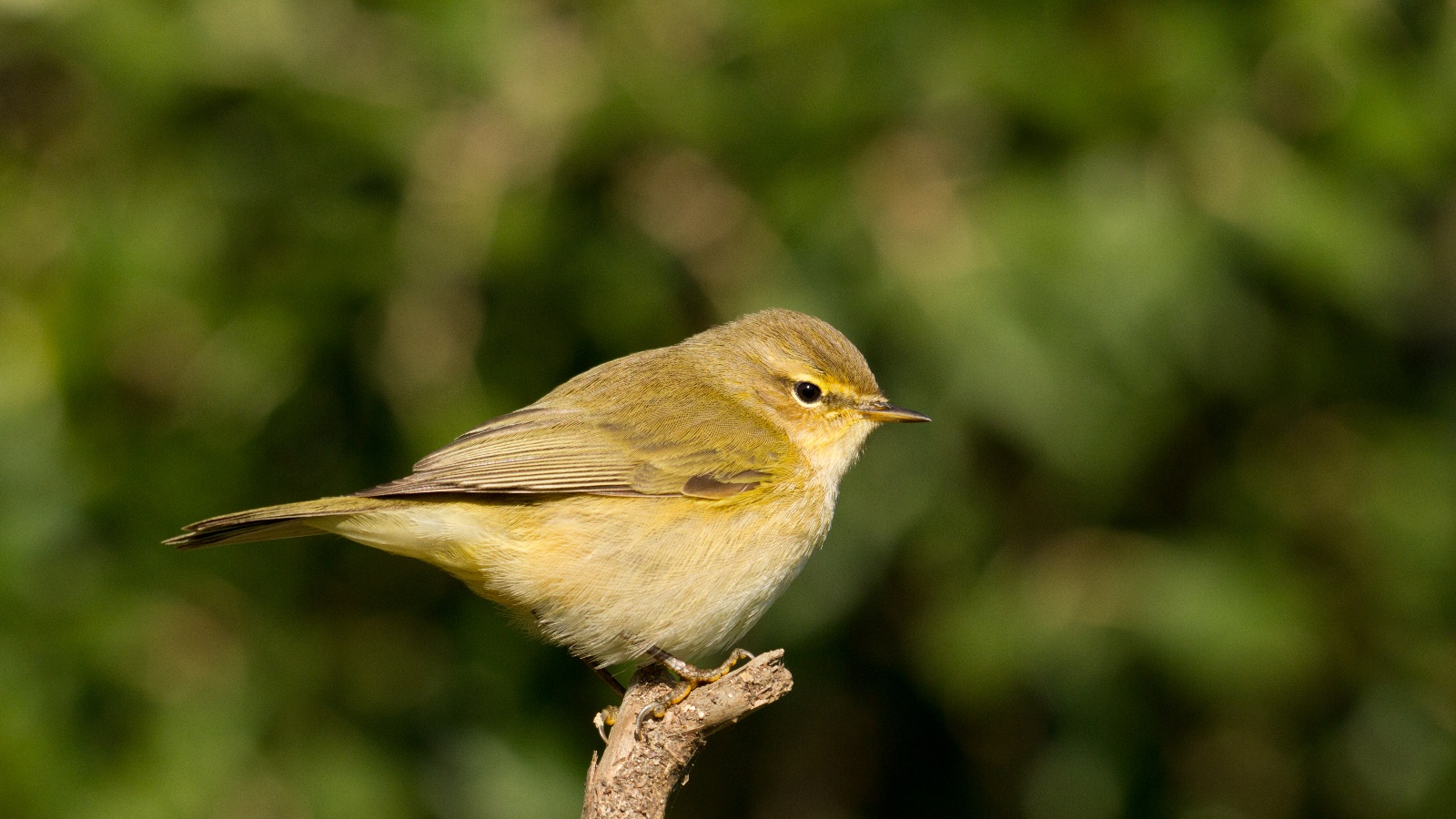Six birds to look out for in the Garden in September and October
A naturalist in the Gulbenkian Garden
There are plenty of interesting things to discover on a walk around the garden in September. Among them are the little birds chirping up in the trees. They are not all great singers, but among them you’ll hear the best voices, as is the case with the Wren.
Eurasian Wren
Troglodytes troglodytes
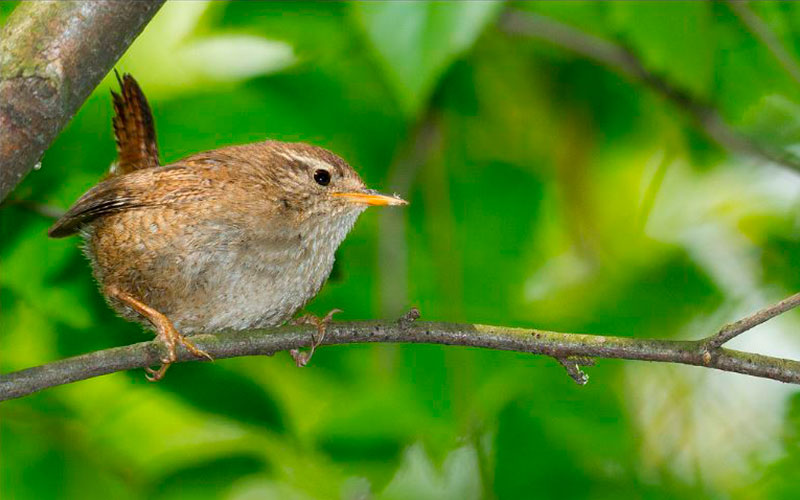
This upright, red and brown-tailed bird is an excellent hunter of tiny bugs found in the crevices of trees or vegetation. Its long, pointed and slightly curved beak is an essential tool when it comes to hunting.But the Eurasian Wren has many more virtues and just to be able to observe this bird is a great pleasure. Despite its small size, its singing is impressive and can be heard throughout the year.
Length: up to 10 centimetres.
Eurasian Blue Tit
Cyanistes caeruleus
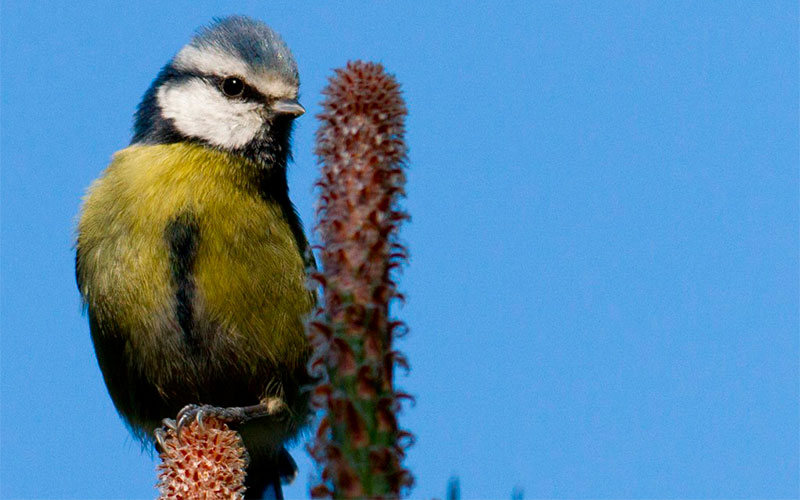
The little Blue Tit is undoubtedly one of the funniest and liveliest little birds of all. It’s easy to spot among the green vegetation, thanks to the blue cap on the top of its head and its yellow chest and belly. It is an admirable acrobat up in the trees and often hangs upside down.
Length: up to 12 centimetres.
Common Firecrest
Regulus ignicapilla
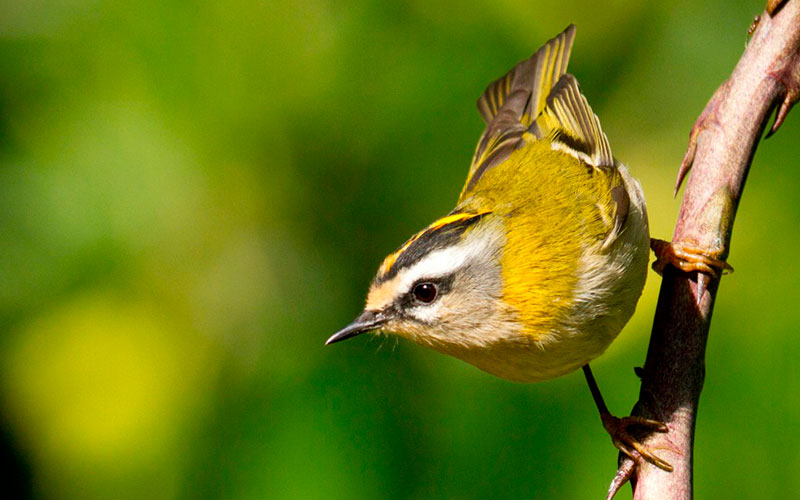
Along with the Short-toed Treecreeper, the Common Firecrest is the smallest of all the Portuguese birds. This orange-crested bird feeds on insects and spiders that it captures on the branches and leaves of trees. Towards the end of September, the number of Common Firecrests starts to increase due to the arrival of migratory birds from Western Europe.
Length: up to 10 centimetres.
Common Chiffchaff
Phylloscopus collybita
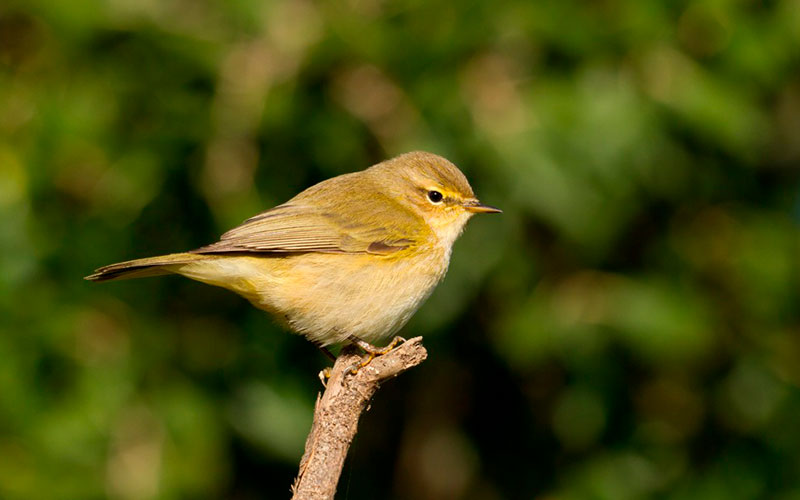
With brown feathers of greenish and yellowish tones, this small bird is also distinguished by its short, fine beak, an essential tool for feeding on insects. The Common Chiffchaff is easier to spot, from north to south of Portugal, when the weather starts getting colder.
Length: up to 12 centimetres.
Red-breasted Robin
Erithacus rubecula
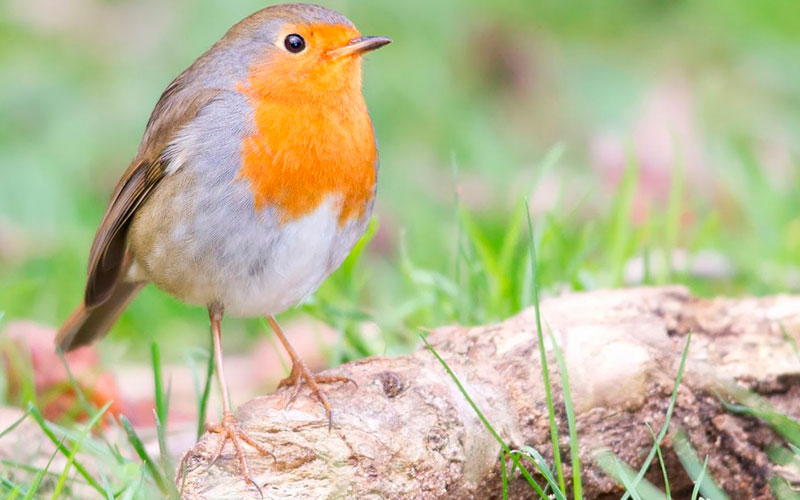
With its characteristic orangey red breast, this bird is easy to recognize. Its gentle and delicate appearance is deceiving as it is known for ferociously defending its territory from other birds. The population increases with the arrival of migratory birds, when the weather starts getting cold. If you hear what sounds like two stones being tapped together, it might just be that there’s a Red-breasted Robin in the neighbourhood.
Length: up to 14 centimetres.
Short-toed Treecreeper
Certhia brachydactyla

If you see a small chestnut silhouette spiralling up a tree trunk and using its hard tail to support itself, chances are it is a Common Treecreeper. This bird usually seeks food in tree trunks feeding on small insects, spiders and woodlice that hide among the mosses and lichens.
Length up to 13 centimetres.
Find out more about the Gulbenkian Garden’s visitors, in the book entitled As Aves do Jardim Gulbenkian (The Birds of the Gulbenkian Garden), by João E. Rabaça.
